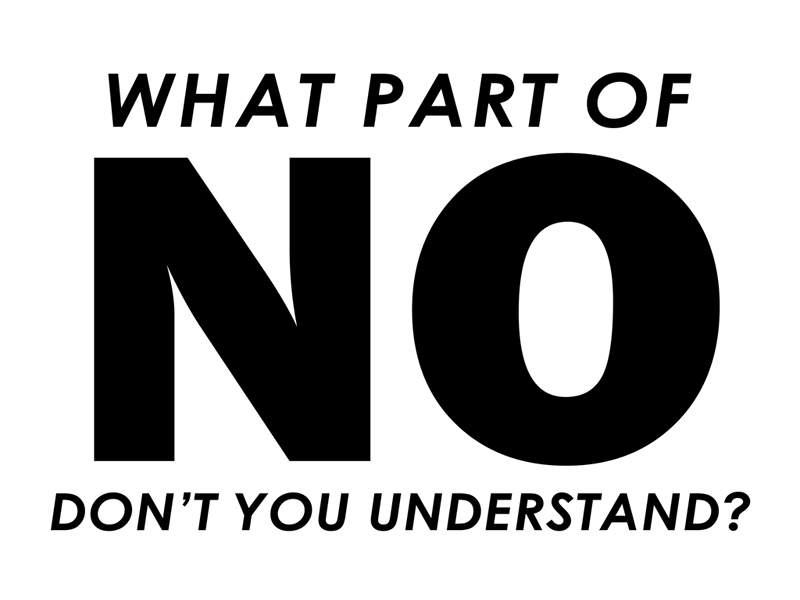 When I assembled a group to write The Positive Power of No: How That Little Word You Love to Hate Can Make or Break Your Business back in 2003, I had no idea it would be the foundation of most of the Clarity work I do today.
When I assembled a group to write The Positive Power of No: How That Little Word You Love to Hate Can Make or Break Your Business back in 2003, I had no idea it would be the foundation of most of the Clarity work I do today.
We had a credo when we were crafting the book: “‘No’ is the foundation of freedom, the cornerstone of clarity, and the icon of integrity.” So why are we so hesitant to pull out that powerful little word? And how you can use it to your advantage?
How “no” becomes a no-no
Remember where our “rules of life,” those rules we carry around in our Knower/Judger, are initially formed? Right! Somewhere between two to three and four to five years of age.
If you have a child three years old or older, you might remember the terrible twos. That’s the period when kids have heard the word “no” for two years and have figured out that it pretty much controls our whole world. So using that magic little word is one of the first things they experiment with. During this stage (with no K/J assembled yet, and operating totally in their Learner/Researcher), they wield “no” boldly.
As parents, we may at some level understand this behavior. But it gets old fast, and even the best of parents grow weary. So after a few weeks, the typical parent response to the two-year-old “no” is complete and utter rejection, if not outright punishment.
“Wow!” the two-year-old figures. “Maybe ‘no’ just isn’t for me.” And if the training goes on long enough, that conclusion can last a lifetime:
• It’s not nice to say no.
• If I say no, I won’t be accepted (or he won’t like me anymore).
• If I say no, I won’t get the sale, raise, promotion, date.
• I don’t want to reject anyone (as I was rejected learning this lesson XX years ago).
Not using “no” becomes an entrenched rule of life, a staple of our K/J—unless our L/R gets involved and looks at how setting limits can drastically improve our quality of life.
Regaining the power of “no”
Let’s start out with what not using “no” gets us:
• Feeling overcommitted
• Paying too much
• Feeling used
• Always getting stuck cleaning up
• Struggling to pull together the work of a committee or group
• Having time and resources stolen
• Being raped (which is structurally similar to all the above)
• Losing freedom
Many of us accept these results as part of our life scripts…where we fit in and how powerful we are and aren’t.
Now let’s look at the plus side of saying no. The most striking examples are cases of civil disobedience—where “no” is an icon of integrity:
• The American Revolution
• Ghandi
• Martin Luther King (and the civil rights movement in general)
Individuals take charge of their personal lives when they make “no” a cornerstone of clarity:
• Decide the job is not worth the intimidation they endure
• Leave an abusive spouse
• Stand up for a value-based position in front of mounted opposition
When I believe that “no” is a possible response to any situation, I am no longer trapped in some K/J reactive response. I may hunt for other choices, but as long as “no” is emotionally available to me, I’m a free man—and “no” is the foundation of that freedom.
I frequently coach teams on the concept of starting out with the “no” option on the table. A table of volunteer board members of a club can be sitting around squabbling about money, duties, vision, any number of things. They have no motivation to let go of agendas. Voices and egos rise.
Then we just say, “No. Let’s just dissolve this organization.” And watch the K/Js start to calm down and the L/Rs begin to connect.
What we’ll say no to, and the conditions under which we’ll say it, define us. Without a clear boundary between yes and no, we’re thrust into a gray area, and we’re stressed. Don’t want to say no. Hate the alternative.
Over the years since we published The Positive Power of No, it’s become even more clear to me that setting the limits before the crisis prepares us better for the battle. “No” can be absolutely liberating.


